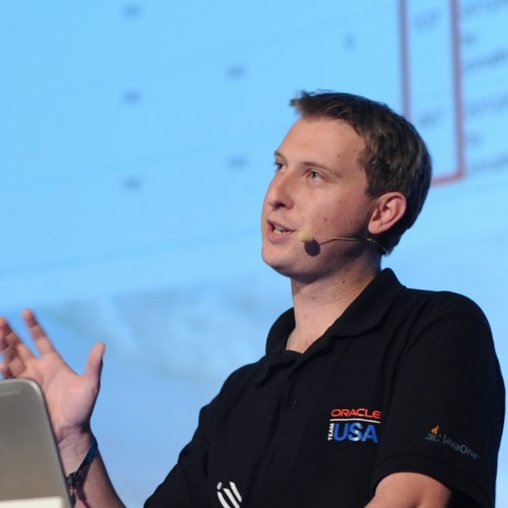by Jonathan Giles | Aug 16, 2012 | Scenic View
Scenic View 1.1.1 is a quick bug fix release following hot on the heels of Scenic View 1.1.0. This release improves the internal debugging ability of Scenic View so that we’re better able to help you when you can’t run Scenic View! Hopefully you’ll do us the courtesy of downloading this version before you file any bug reports with us (via FX Experience comments).
As always, the download is available from the Scenic View page.
This has been a public service announcement, brought to you by the letters S and V, with a big dollop of F and X.
by Jonathan Giles | Aug 14, 2012 | Scenic View
Ander Ruiz and I have been working frantically on Scenic View since we first released it a while back, and we are really, really, really pleased to finally announce the release of verion 1.1.0. Scenic View 1.1.0 took a while to get out as it is a huge update to Scenic View. The features are all detailed on the Scenic View help page, but briefly the most important feature of this release is that whilst Scenic View still supports the old ScenicView.show(scene) method, it now also is a standalone application that can discover running JavaFX applications at runtime. This was by far the biggest feature request we received, and we heard you and spent untold hours hacking it out (and pulling our hair out!). The amount of hacking required to find and communicate with JavaFX applications at runtime is immense, and I am so pleased that we were able to crack this!
Other new features include support for java instrumentation, multistage, a heap of improvements based on user feedback, improvements in the component highlight feature, etc, etc, etc.
The other big thing for this release is that we have a really good foundation to start adding new functionality, and we already have 1.2.0 in the works with a bunch of new features in it, including event tracing, animation tracing, and javadoc browsing. We’ll be getting 1.2.0 out as soon as possible. Hold on – we’ve got a lot in store!
I’m not one for big press release announcements. For those of you who use Scenic View (and based on the download stats there are a lot of you!), get downloading! For those of you new to Scenic View, read the help page to understand what Scenic View is.
by Jonathan Giles | Aug 12, 2012 | Links
Hi all, here’s another weeks worth of links. Enjoy and keep up the hard work!
Catch you all next week 🙂

by Jonathan Giles | Aug 12, 2012 | Interviews
Today I have an interview with Daniel Zwolenski, a developer who has been involved with JavaFX, both from a commercial point of view, and as part of the open source community. He is active in openjfx-dev mailing list discussions, as well as running a very popular blog on using JavaFX in enterprise environments. I first had the privilege to meet up with Daniel when I was living in Brisbane, Australia last year, and he continues to be a contributor to the future of OpenJFX discussions today. Without further ado, lets get go with the interview – please enjoy! 🙂
 Hi Daniel – could you please introduce yourself to everyone?
Hi Daniel – could you please introduce yourself to everyone?
For the last 14 years I have been working in the Java application space, designing and building Java applications of all shapes and sizes for many different clients and industries. I’m based in Australia, currently in Melbourne, but I have worked in the UK, Ireland and very briefly in France.
Among many other projects, I was the architect and led the development of Coinland (an online virtual world for kids sponsored by one of the major Australian banks), I’ve driven the re-development of SMART (the key reporting tool for the National Assessment Program for Literacy and Numeracy in the state of NSW), and I’ve been a core part of the team that developed the management system for Tourism Australia’s ATE (the largest tourism expo in the southern hemisphere).
I’ve deliberately stayed as an independent contractor, changing fields and companies in search of the most interesting and challenging work. I love the variety, and opportunity this provides to grow my skills and expand my experiences. I have managed teams of all shapes and sizes, worked in with large corporate teams, and at times, acted as a one-man development team.
I get a buzz from interacting with my users and user interface development has always been my preferred space. I cut my teeth on Microsoft’s Visual C++ and MFC platform, and then happily made the move to Java when Swing was released. I’ve worked in the web space, but always felt limited by what I could provide for my users, even when using technologies like GWT. I’ve also developed Android applications and been involved with some iPhone development.
JavaFX is a very natural fit for me, and a platform that I really want to see dominate mainstream application development. I want to be at the point where 9 out of 10 contracts on seek.com are looking for JavaFX developers, and when I walk in and pick up some legacy system, it’s a JavaFX application, not a webapp. In a perfect world I would never have to debug another cross-browser JavaScript problem, or worry about what will happen to my session scope if the user hits the back-button.
Although I love to code, I don’t use computers much outside of development. I spend a lot of my time working with non-profit organisations, especially environmental ones. Recently I have taken on a contract with Our Community, a group providing software and services to the non-profit sector. It’s an awesome place that is the perfect balance of commercial systems development, community awareness and social conscious. Unfortunately they are not yet using JavaFX, but I hope to have them converted before too long!
(more…)
by Jonathan Giles | Aug 5, 2012 | Links
Welcome to another weeks worth of JavaFX links! There are a heap of links this week, so I hope you all find something you enjoy and learn from! 🙂
- JavaFX 2.2 developer preview build 19 was released this week.
- Igor Nekrestyanov has posted about drop-in resources when using the native packaging feature in JavaFX 2.2.
- Tom Schindl has announced e(fx)clipse 0.1.0 has been released, which includes a huge number of new features for things like native packaging, splash screens, Scene Builder integration, and a lot more.
- For those of you who want a logarithmic scale in the JavaFX charts API, it’s your lucky day: Kevin Senechal has posted an implementation you can drop into your own apps!
- Roger Brinkley interviewed me for the Java Spotlight Podcast whilst he was on vacation in New Zealand. Of course the topics covered are all to do with my area of focus: JavaFX UI controls.
- Ander Ruiz and I released Scenic View 1.1 beta build 7, and based on the feedback we think this may be the last beta release before a final release of 1.1 this week.
- The UGate blog has posted part three of the JavaFX programmatic POJO expression bindings posts. You can find part one and two at their respective links.
- Chika Okereke has blogged about PDF to JavaFX conversions, this time covering fade-in transitions in JavaFX.
- Andreas Billmann has two blog posts this week. Firstly, he shares some code on how to create a glowing icon button to catch users attention, and building on top of this he then shares code which shows small (and possibly animated) icons on top of a button, again to catch the users attention. This kind of code should be polished and added to the JFXtras project!
- Sanjay Dasgupta has blogged about his FX.js project, which, according to the language guide, is an attempt to allow developers to develop JavaFX applications using the JavaScript language.
- José Pereda continues to blog on his work around his MatrixPanel control, this week showing animated traffic signs.
- WichitSombat has posted a YouTube video on how to set up a development environment for JavaFX using IntelliJ IDEA Community Edition 11.0.2.
- Thierry Wasyl has posted two posts this week. Firstly he talks about keyboard shortcuts and mnemonics in JavaFX 2, and secondly he has posted another video of his TweetWallFX application.
That’s all folks! Catch you all in a weeks time… 🙂



